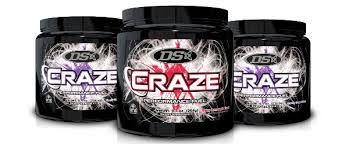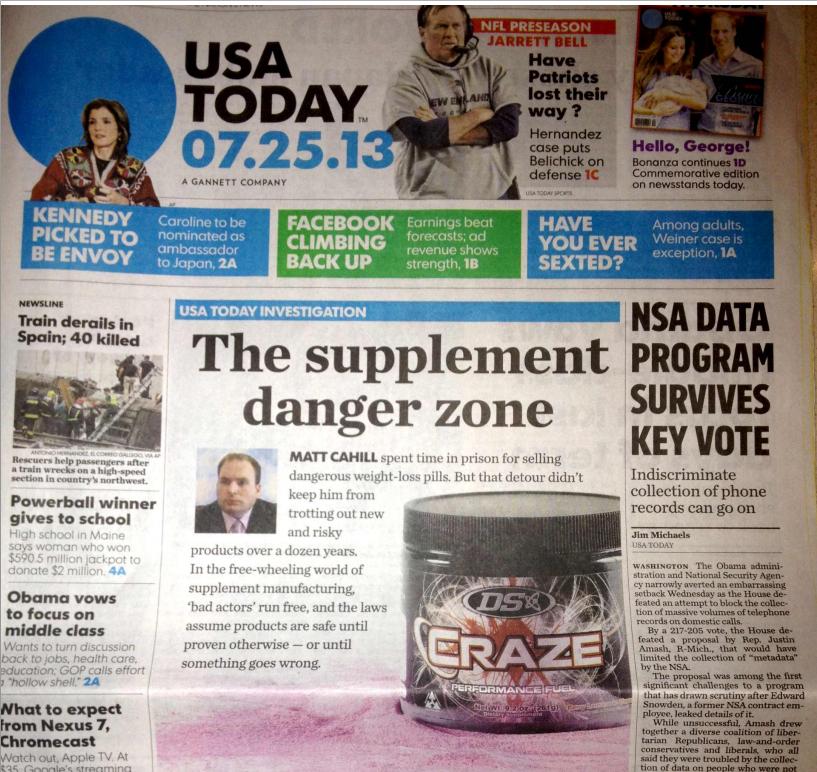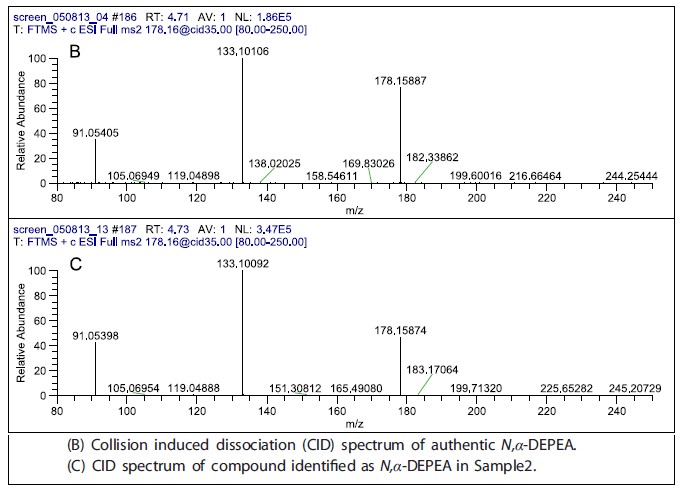Spiked supplements and CRAZE
 Almost every supplement or pro-hormone that really worked was banned, what we see now, more and more, is that FDA finds spiked supplements.
Almost every supplement or pro-hormone that really worked was banned, what we see now, more and more, is that FDA finds spiked supplements.
The war on drugs is about to include supplements and is just going to bring down more FDA control of supplements, Matt Cahill a designer supplements manufacturer sold DMAA – SuperDrol and DNP. Now it seems Craze was spiked also.
Bodybuilders use PWO’s (pre work outs), mostly things like cialis to get a better pump. From the day I started to work with weights, I know that a few cups of strong black coffee would help during my work-out, many even use a lotta sugar in it but I don’t like sugar at all.
If you google on spiked supplements you realize it is a known problem, not only in bodybuilding supplements and pwo’s but also in dietary supplements -vitamins- sexual-enhancement supplements and especially in weight loss supplements. Part of the appeal of supplements is their apparent naturalness, so they often have a veneer of being safer than prescription drugs.
But not only bodybuilders use all these means but also middle-aged women who are looking to improve their health, younger guys trying to add a little boost to their workout regiment, older men who might be deficient in some nutritional areas, and younger girls who are looking for a hotter body…..the list of people who use nutritional supplements and vitamins come from all walks of life.
 And most of them are just average, ordinary people who are simply searching for another means of staying fit, and in good health. Yes, there are some who also want to look great, get that sexy body, and compete in sports but for the most part, vitamin and nutritional supplement users mainly hope to keep good physical fitness.
And most of them are just average, ordinary people who are simply searching for another means of staying fit, and in good health. Yes, there are some who also want to look great, get that sexy body, and compete in sports but for the most part, vitamin and nutritional supplement users mainly hope to keep good physical fitness.
By example Healthy Life Chemistry By Purity First B-50, marketed as a vitamin B dietary supplement. A preliminary FDA laboratory analysis indicated that the product contains two potentially harmful anabolic steroids—methasterone, a controlled substance and dimethazine. These ingredients were not listed in the label and should not be in a dietary supplement
1,3-Dimethylamylamine (DMAA) is a substance with amphetamine-like effects found in bodybuilding and weight-loss products and recreational drugs (also marketed as methylhexaneamine, dimethylpentylamine and geranium).1 DMAA was recently banned in Australia and other countries owing to toxicity, lack of health benefits, and concerns about long-term safety and potential for
By law, dietary supplements must contain at least one vitamin, mineral, amino acid, enzyme, or other substance used by the body. But a growing number of supplements have also been spiked with prescription, banned, or completely untested drugs that you won't find listed on the label. Makers of these suspect potions often claim they're confused by overlapping government jurisdictions over what is and is not legal. More often the adulteration is deliberate and criminal, carried out by sellers who want to grab a share of a $27 billion market by touting a pill that really delivers. A single product can become an instant blockbuster: Before Competitive Edge Labs discontinued M-Drol, the company's gross annual revenue totaled more than $4 million—an impressive haul for an outfit with a payroll of four.
Products most likely to be spiked are those sold for weight loss, bodybuilding, and "sexual enhancement"—categories pitched largely to men. The labels use the word "supplement," but the capsules might contain steroids, erectile-dysfunction drugs such as sildenafil (the active ingredient in Viagra), or any of a number of weight-loss drugs, some of which have been pulled from the market over safety concerns. It's an old scam, but with the globalization of drug manufacturing and the ease of Internet retailing, your odds of coming across a tainted supplement are higher than ever.
The products usually come from sophisticated operations that combine the knowledge of science with the shrewdness of organized crime, Levy says. Often the drugs are chemically modified—with atoms added or removed like Tinkertoy pieces—in order to evade detection in lab tests. The problem is, a seemingly slight change in molecular structure could have disastrous consequences. Consider that the difference between ethanol (a substance you may ingest at happy hour) and methanol (a chemical that will swiftly blind and then kill you) is one carbon atom and a couple of hydrogens. Or that removal of a single oxygen-hydrogen pair turns a decongestant into methamphetamine.
Even if the drug is not chemically cloaked, it could still be risky. One common ingredient in adulterated weight-loss supplements is sibutramine, a prescription weight-loss drug that was withdrawn from the U.S. market because users developed greater risks for heart attacks and strokes. Also, a juiced supplement may contain a much higher dose of a drug than its legitimate counterpart, and be produced with little if any quality control.

******************************************************************************************************************
Pharmaceuticals and banned substances have been detected in hundreds of purportedly natural supplements. Recently, several athletes have been disqualified from competition after testing positive for the methamphetamine analog N,α-diethyl-phenylethylamine (N,α-DEPEA). Athletes have claimed they unknowingly consumed the banned stimulant in workout supplements. Three samples from different lot numbers of Craze, a workout supplement, were analyzed to detect the presence and concentration of N,α-DEPEA. Two labs independently identified N,α-DEPEA in the supplement using ultra high performance liquid chromatography (UHPLC) coupled to an LTQ Orbitrap XL mass spectrometer and UHPLCquadruple- time-of-flight mass (Q-TOF) spectrometer, respectively. The identity of N,α-DEPEA was confirmed using nuclear magnetic resonance and reference standards. Manufacturer recommended servings were estimated to provide 21 to 35mg of N,α-DEPEA. N,α-DEPEA has never been studied in humans. N,α-DEPEA is a methamphetamine analog; however, its stimulant, addictive and other adverse effects in humans are entirely unknown. Regulatory agencies should act expeditiously to warn consumers and remove N,α-DEPEA from all dietary supplements. Copyright © 2013 John Wiley & Sons, Ltd.
Introduction
Pharmaceuticals and banned substances have been found in hundreds of dietary supplements.[1–4] After several athletes failed urine drug tests because of a new methamphetamine analogue,[5] we were concerned that a widely available workout supplement, Craze (Driven Sports, Inc.), might contain the banned stimulant. Craze is marketed as ‘performance fuel’ that provides ‘the ultimate in pre-workout power’. [6] The supplement is labelled as containing a dendrobiumorchid extract comprising several phenylethylamines including N,N-diethyl-phenylethylamine (N,N-DEPEA). [6] N,N –DEPEA is a structural isomer of the methamphetamine analog N,α-diethylphenylethylamine (N,α-DEPEA). We therefore tested the supplement to determine the presence of N,α-DEPEA.

Methods and results
Sample 1 was purchased from a US online supplement retailer An aqueous/methanolic extract of the supplement was analyzed by NSF International (Ann Arbor, MI, USA) using its standard approach of ultra high performance liquid chromatography (UHPLC) coupled to an LTQ Orbitrap XL mass spectrometer. Briefly, separations were performed on a Acquity UHPLC BEH C18 column (2.1mm ID x 50 mm, 1.7mm particle size) with a gradient of 0.1% formic acid in water and acetonitrile. Full-scan data was collected at 30 000 FWHM. Product ion spectra were collected in parallel using data dependent acquisition and unit mass resolution on the linear ion trap. A reference standard was not available at the time of analysis. The accurate mass measured was within 0.79 ppm of the theoretical mass of protonated N,α-DEPEA (C12H20N.) The fragmentation of the compound exhibited a loss of 45da, which strongly indicated the presence of N,α-DEPEA as opposed to N,N-DEPEA, which would be expected to have a loss of 73da (Figure 1). Sample 1 was sent to the US Food and Drug Administration (FDA). Sample 2 was purchased in the USA from a GNC store, a mainstream retailer of supplements, and analyzed by NSF International using the same methodology as above which strongly indicated the presence of N,α-DEPEA. The identity of N,α-DEPEA in Sample 2 was confirmed by comparison of the retention time, accurate mass and product ion spectrum with a N,α-DEPEA reference standard (Enamine product no. EN300-106805)
(Figure 1). Quantitative UHPLC analysis of Sample 2 showed a concentration of 4.0mg/g of N,α-DEPEA, corresponding to 21mg per manufacturer recommended serving.
Sample 3 was purchased from a European online supplement retailer A methanolic extract of the supplement was analyzed at the Netherland’s National Institute for Public Health and the Environment (NIPHE) using its standard method of UHPLC-Synapt G2 Q-TOF-MS/MS analysis strongly indicating the presence of N,α-DEPEA. The identity of N,α-DEPEA was confirmed by the Korean Forensic Service usinga reference standard and nuclear magnetic resonance (NMR) after acid/base separation of the supplement. Quantitative NMR analysis performed at NIPHE showed a concentration of 6mg/g of N,α-DEPEA, corresponding to 35mg per manufacturer recommended serving.
Comment
We found a potentially dangerous designer drug, N,α-DEPEA, in three separate lots of a widely available dietary supplement. Each sample had a different lot number.
N,α-DEPEA is a structural analogue of methamphetamine; however, its stimulant, addictive, and other adverse effects in humans are entirely unknown.
N,α-DEPEA is described in the patent literature,[7] but, to our knowledge, it has never been studied in humans. N,α-DEPEA has been described in only four peer-reviewed publications.[8–11] In the early 1990s, N,α-DEPEA was identified as a potential designer drug and its cross-reactivity with several commercial urine amphetamine tests was studied (1 of 5 were positive).[9,10] More recently, a batch of pure N,α-DEPEA was seized in Korea and suspected of being distributed as an illicit designer drug.[8] Contemporaneous with our investigation, the Korean Forensic Service also confirmed the presence of N,α-DEPEA in two additional samples of Craze.[11]
The Craze supplement is labelled as containing several phenylethylamines claiming to be derived from dendrobium.[6] Phenylethylamines include a very broad category of chemicals that range from benign compounds found in chocolate to synthetically produced illicit drugs. The phenylethylamine that we identified, N,α-DEPEA, is not listed on the Craze label nor has it ever been identified in any plant (including dendrobium). The quantities per serving of >20mg strongly suggest that N,α-DEPEA is not a minor contaminant resulting from the manufacturing process nor a previously undiscovered trace component of dendrobium. Of note, the supplement label listed N,N-DEPEA, a structural isomer of the actual ingredient. The listing of a structural isomer might mislead regulators trying to determine the actual ingredients in the supplement. A limitation of our research is that we did not analyze all workout supplements labelled as containing dendrobium. Therefore, we cannot exclude the possibility that other supplements labelled as containing dendrobium may also contain N,α-DEPEA.

Total ion chromatogram and collision induced dissociation of Sample 2; structures of methamphetamine and N,α-DEPEA.

If our findings are confirmed by regulatory authorities, the FDA should take immediate action to warn consumers and remove all N,α-DEPEA-containing supplements from the marketplace.
.References
[1] US Food and Drug Administration. Tainted supplements CDER.
[2] P.A. Cohen. American roulette – contaminated dietary supplements. N. Eng. J. Med. 2009, 361, 1523.
[3] P.A. Cohen. DMAA as a dietary supplement ingredient. Arch. Intern. Med. 2012, 172, 1038.
[4] P.A. Cohen, B.J. Venhuis. Adulterated sexual enhancement supplements: more than mojo. JAMA Intern. Med. 2013, 173, 1169.
[5] World Anti-Doping Agency. 2012 Anti-doping testing figures report.
[6] Craze label. Available at: //gnc.imageg.net/graphics/product_images/
pGNC1-13935235_gnclabel_pdf.pdf [9 September 2013].
[7] J. Knoll, E. Szinnyei, E. Somfai, Z. Török, K. Mozsolits,J. Bergmann 1988, New psychostimulant agent. International application published under the patent cooperation treaty
[8] J. Lee, S. Choe, H. Choi, S. Heo, E. Kim, H. Kim, E. Bang, H. Chung. Identification of N-ethyl-α-ethylphenethylamine in crystalline powder seized for suspected drug trafficking: a research chemical or a
new designer drug? Forensic Toxicol. 2013, 31, 54.
[9] F.T. Noggle, C.R. Clark, P. Pitts-Monk, J. DeRuiter. Liquid chromatographic and mass spectral analysis of 1-phenyl-2-butanamines: homologues of the amphetamines. J. Liquid Chroma. 1991, 14, 1393.
[10] F.P. Smith, D.A. Kidwell. Isomeric amphetamines – a problem for urinalysis? Forensic Sci. Int. 1991, 50, 153.
[11] J. Lee, B.J. Venhuis, S. Heo, H. Choi, I. Seol, E. Kim. Identification and quantitation of N,α-diethylphenethylamine in preworkout supplements sold via the internet. Forensic Toxicol. 2013.
- Login to post comments


